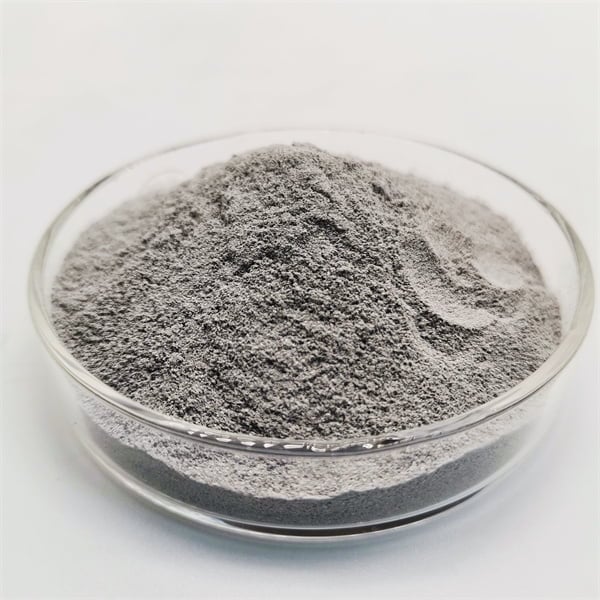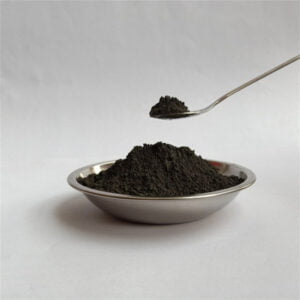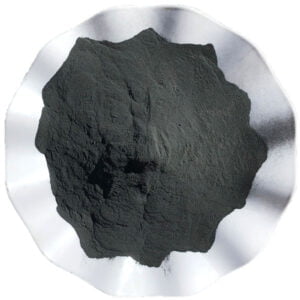3Dプリント材料の種類とは
目次
Imagine a world where crafting your ideas becomes as easy as shaping virtual dough. That’s the magic of 3Dプリンティング, a technology that’s revolutionizing how we design and create objects. But just like a sculptor needs the right clay or a painter requires the perfect pigments, 3D printing thrives on a diverse range of materials.
This article is your one-stop guide to understanding the exciting world of 3D printing materials. We’ll delve into the common types, explore their characteristics, and equip you with the knowledge to choose the ideal material for your next 3D masterpiece.

Common Types of 3Dプリンティング 材料
The world of 3D printing materials is a vast and ever-evolving landscape. But some superstars reign supreme, each suited for specific applications. Here’s a closer look at the most popular materials:
- Fused Deposition Modeling (FDM) Filaments: Think of these as the building blocks for FDM printers, the most common type. Imagine a spool of thin plastic wire – that’s filament! When heated, it melts and extrudes through a nozzle, building your design layer by layer. Popular FDM filaments include:
- ポリ乳酸(PLA): The eco-warrior of the bunch, PLA is a biodegradable plastic derived from corn starch or sugarcane. It’s user-friendly, prints beautifully with a glossy finish, and is ideal for beginners or creating decorative objects. However, PLA can be brittle and isn’t heat-resistant.
- Acrylonitrile Butadiene Styrene (ABS): This versatile filament offers superior strength, durability, and heat resistance compared to PLA. It’s perfect for functional parts that need to withstand some wear and tear, like phone cases or prototypes. However, ABS can warp during printing and emits a slight odor.
- Stereolithography (SLA) Resins: SLA printers utilize liquid resin cured by a laser beam to create incredibly detailed and smooth prints. Here’s the analogy: Think of SLA resin like high-tech light-sensitive liquid that hardens when exposed to a specific light source. Popular SLA resins include:
- Standard Resins: These are the workhorses of SLA printing, offering a good balance of detail, strength, and affordability. They’re perfect for creating prototypes, figurines, and detailed models.
- Tough Resins: Need extra strength and flexibility? Tough resins are your answer. They’ re ideal for functional parts that experience some stress, like gears or housings. However, they might be slightly less detailed compared to standard resins.
- 金属粉: Metal 3D printing takes things to a whole new level. Imagine crafting objects directly from metal – that’s the power of metal powders! These printers use a variety of techniques to bind metal particles together, creating incredibly strong and functional parts. Popular metal powders include:
- ステンレススチール: The go-to metal for its strength, corrosion resistance, and versatility. It’s perfect for creating functional parts for aerospace, medical, and automotive applications.
- チタン: Lighter than steel but just as strong, titanium is the ultimate choice for applications where weight is a critical factor. Think aerospace components or high-performance prosthetics!
This list just scratches the surface! Other exciting materials like nylon, polypropylene (PP), and even biocompatible materials for medical applications are constantly pushing the boundaries of 3D printing.
How to Choose the Appropriate 3D Printing Material
Choosing the right 3D printing material is like selecting the perfect ingredient for your recipe. It all depends on what you’re trying to create! Here are some key factors to consider:
- アプリケーション What will the printed object be used for? A decorative figurine requires a different material than a functional tool. Consider factors like strength, flexibility, heat resistance, and weight.
- 望ましい特性 Do you need a strong and durable material, or is a smooth and detailed finish more important? Different materials excel in different areas.
- 印刷技術: Not all materials work with all printers. Ensure your chosen material is compatible with your specific 3D printer technology (FDM, SLA, etc.).
- 経験レベル Beginner-friendly materials like PLA make the learning curve less steep. As your skills grow, you can explore more advanced materials.
- コストだ: 3D printing materials vary in price. Consider the cost per kilogram or liter of material and how much you’ll need for your project.
What are the Characteristics of Different 3D Printing Materials?
Now that you’ve met the stars of the 3D printing material show, let’s delve deeper and understand their unique characteristics. This knowledge will empower you to make informed decisions for your projects.
FDM Filaments:
- PLA: This eco-friendly filament boasts excellent printability with minimal warping. Imagine creating intricate objects with a smooth, almost glossy finish – that’s the beauty of PLA. However, keep in mind its limitations. PLA can become brittle under stress and struggles with high temperatures (think hot car dashboards!).
- ABS: Known for its strength and durability, ABS is the go-to choice for functional parts. It can handle some heat and physical abuse, making it ideal for prototypes or phone cases. However, ABS has a tendency to warp during printing, especially for larger objects. Additionally, it emits a slight odor during printing, requiring proper ventilation.
SLA Resins:
- Standard Resins: These versatile resins offer a delightful balance between detail, strength, and affordability. Imagine capturing even the most intricate details of your design – that’s the magic of standard resins. They’re perfect for creating smooth and visually stunning prototypes, figurines, and detailed models. However, they might not be the strongest option for highly functional parts that experience significant stress.
- Tough Resins: As the name suggests, tough resins are formulated for enhanced strength and flexibility. Think of them as the athletes of the resin world! They’re ideal for functional parts that need to withstand some bending or pressure, like gears or housings. The trade-off? They might not capture the same level of detail compared to standard resins.
金属粉:
- ステンレススチール: This is the workhorse of metal 3D printing, revered for its strength, corrosion resistance, and versatility. Imagine crafting objects that can handle harsh environments and a bit of roughhousing – that’s the power of stainless steel. It’s a popular choice for applications in aerospace, medical, and automotive industries. However, stainless steel can be more challenging to print compared to other metal powders.
- チタン: The epitome of lightweight strength, titanium is the ultimate choice for applications where weight is a critical factor. Imagine creating high-performance prosthetics or aerospace components that are incredibly strong yet feathery light! However, titanium is a more expensive material compared to stainless steel.
Beyond the Basics: Exploring Additional Material Properties
Our exploration doesn’t stop here! Here are some additional properties to consider when choosing a 3D printing material:
- 生体適合性: For medical applications, biocompatible materials are crucial. Imagine creating implants or prosthetics that are safe for the human body! Materials like certain nylons and bioresorbable polymers fall into this category.
- 柔軟性: Need a material that can bend and flex? Think flexible filaments like TPU (Thermoplastic Polyurethane) – the perfect choice for creating phone cases, wearable tech components, or even flexible robotics parts!
- 耐熱性: If your creation will encounter high temperatures, consider materials like high-temperature nylons or PEEK (Polyether Ether Ketone). Imagine crafting parts for engines or heat-resistant tools – these materials can handle the heat!
- 導電率: For projects requiring electrical conductivity, filaments with embedded metal particles or conductive resins might be the answer. Imagine creating functional circuits or antennas directly through 3D printing!
Understanding these properties unlocks a world of possibilities when it comes to 3D printing. It’s like having a toolbox filled with specialized tools, each designed for a specific creative task.
What is the Price of 3Dプリンティング Materials?
The cost of 3D printing materials can vary depending on several factors, including:
- 素材の種類 Exotic materials like metal powders or biocompatible resins naturally come with a higher price tag compared to standard PLA filament.
- Brand and Quality: Different brands and manufacturers might offer the same material type at varying price points. Generally, higher quality materials tend to cost more.
- Form and Quantity: Materials are often sold by the kilogram (kg) for filaments or liter (L) for resins and metal powders. Buying in bulk can sometimes offer a cost advantage.
Here’s a rough estimate to give you an idea:
- FDM Filaments: PLA can range from $20-$50 per kg, while ABS might cost $25-$60 per kg. Specialty filaments like nylon or high-temperature filaments can reach $70-$100 per kg.
- SLA Resins: Standard resins typically fall between $50-$100 per liter. Tough resins or specialty resins can cost upwards of $120 per liter.
- 金属粉: Metal 3D printing materials are generally the most expensive. Stainless steel powder can range from $100-$200 per kg, while titanium powder can reach even higher prices, exceeding $300 per kg.
Beyond the Price Tag: Considering Additional Costs
Remember, the cost of the material itself isn’t the only factor to consider. Here are some additional things to keep in mind:
- Printing Time: Some materials take longer to print compared to others. This can translate to higher electricity consumption and increased printing costs.
- Support Material: Certain printing processes require support material to build overhangs and complex geometries. This adds to the overall material cost.
- Wastage: There will always be some material waste during the printing process, especially during calibration and failed prints. Factor this into your cost calculations.
Making Informed Choices: Balancing Cost with Performance
The key to navigating the cost landscape of 3D printing materials lies in finding the right balance between affordability and performance. Here are some tips:
- Clearly define your project requirements. Do you absolutely need a high-performance metal part, or can a more affordable FDM filament suffice?
- Research different brands and suppliers. Compare prices and consider customer reviews to find the best value for your money.
- Consider the total cost of ownership. Factor in printing time, support material needs, and potential wastage when making your decision.
By keeping these factors in mind, you can make informed choices about 3Dプリンティング materials that fit your budget and project requirements.

よくあるご質問
Q: What is the easiest 3D printing material to use?
A: PLA filament is generally considered the easiest to use due to its low printing temperature, minimal warping, and user-friendly nature.
Q: What is the strongest 3D printing material?
A: Metal powders, particularly stainless steel and titanium, offer the highest strength among common 3D printing materials.
Q: What is the most detailed 3D printing material?
A: SLA resins excel in capturing fine details and producing smooth surface finishes.
Q: Is 3D printing material eco-friendly?
A: Some materials are more eco-friendly than others. PLA, for instance, is a biodegradable plastic derived from renewable resources.
Q: How much does a 3D printer cost?
A: 3D printer costs vary greatly depending on technology, features, and brand. Home hobbyist printers can start around $200, while professional machines can reach tens of thousands of dollars.
Table 1: Comparison of Common 3D Printing Materials
| 素材 | 長所 | 短所 | 代表的なアプリケーション |
|---|---|---|---|
| PLA Filament | Easy to use, affordable, eco-friendly, good printability | Brittle, low heat resistance | Decorative objects, prototypes, figurines |
| ABS Filament | Strong, durable, heat resistant | Warps during printing, emits slight odor | Functional parts, prototypes, phone cases |
| Standard SLA Resin | High detail, smooth finish, affordable | Not the strongest option | Prototypes, figurines, detailed models |
| Tough Resin | Strong, flexible | Slightly less detailed compared to standard resins | Functional parts, gears, housings |
| ステンレススチール・パウダー | Very strong, corrosion resistant | More challenging to print, expensive | Aerospace parts, medical implants, automotive components |
| チタンパウダー | Lightweight, very strong | 高い | High-performance prosthetics, aerospace components |
シェアする
MET3DP Technology Co., LTDは、中国青島に本社を置く積層造形ソリューションのリーディングプロバイダーです。弊社は3Dプリンティング装置と工業用途の高性能金属粉末を専門としています。
関連記事
Met3DPについて
最新情報
製品

3Dプリンティングと積層造形用金属粉末

















